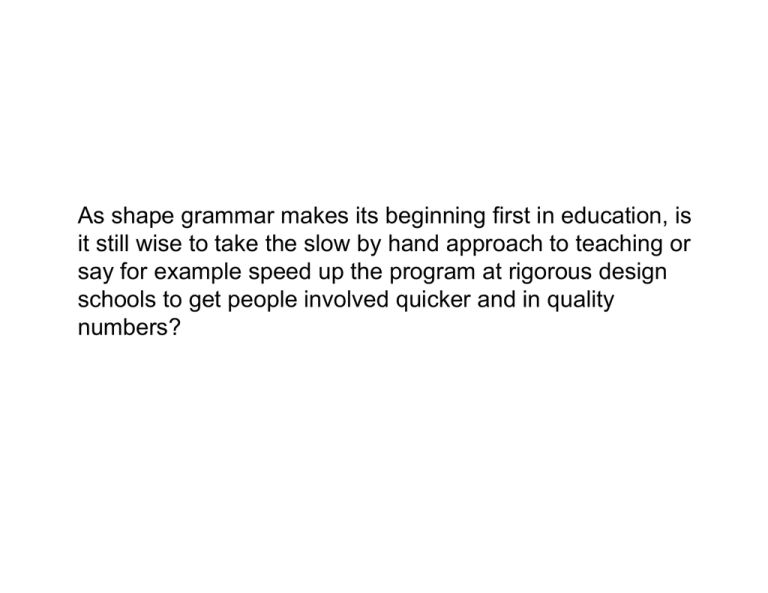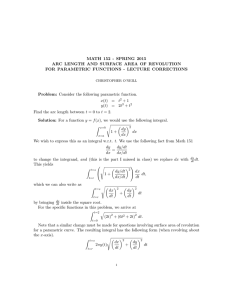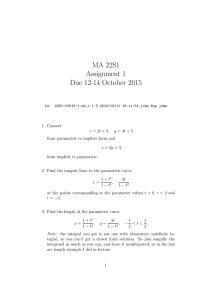As shape grammar makes its beginning first in education, is
advertisement

As shape grammar makes its beginning first in education, is it still wise to take the slow by hand approach to teaching or say for example speed up the program at rigorous design schools to get people involved quicker and in quality numbers? "Rules do not circumvent intuition, inspiration and so forth" - I agree with the argument that "the designs of rules involve intelligence and intuition, imagination, etc.", however can it not be considered that this type of design requires a different set of skills (more mathematical perhaps) than creating purely from / in an original kind of way? It seems to me that architecture, art, and design are only minimally about shape, so how can a shape grammar take into consideration other design issues, including program and structure and even intention or message? rule X → Y shape rule: X → Y design A rule applies to a design: whenever there is a transformation t that makes the left-side X a part of the design: t(X) ≤ design To apply the rule: first subtract the transformation t of the left-side X from the design, and then add the same transformation t of the right-side Y to the design. The result of applying the rule is a new design: new design = [design - t(X)] + t(Y) rule X → Y addition rule: subtraction rule: add/subtract rule: X≤Y Y≤X X ≤ Y and Y ≤ X fellow tumbling shapes → rule ⇒ computation ⇒ ⇒ ⇒ ⇒ nondeterminism choices of ways to apply rules which rule to apply where to apply a rule how to apply a rule labels control rule applications state labels which rule to apply (when to apply a rule) spatial labels where to apply a rule how to apply a rule rule? → → → erasing rule ⇒ ⇒ ⇒ ⇓ ⇐ computation ⇐ → → → → → → state labels which rule to apply (when to apply a rule) • sequence of rule applications • repetition of rule applications → → rules ⇒ computation ⇒ ⇒ → → rules ⇒ computation ⇒ ⇒ ⇒ 2 1 → 1 2 → rules 1 2 2 1 1 ⇒ ⇒ ⇒ computation state labels: sequence ⇒ 2 1 → state labels: repetition 2 1 → 1 1 → state labels: repetition 2 1 → 1 1 → x+1 x → state labels: repetition initial shape starting condition → rule initial shape designs? initial shape designs? → rule initial shape initial shape designs? designs? (optional) final state stopping condition 2 1 → 1 2 → rules final state: 1 final state: 2 designs? designs? shape grammar initial shape rules (final state) 1 initial shape 2 1 → 2 1 → rules final states: 1 or 2 parametric design schema or type of design some properties fixed some properties vary parametric schema values assigned to variables x=5 y = 15 z = 1.45 parameters: x y z . . . design * * 3 x 5 grid * * 3 x 5 grid parametric design with CATIA (Reading Room: Barrios, Kilian, Morshead) parametric shape grammars rules and initial shape are parametric shapes parametric rule d1 d1 d2 d3 d3 d4 d4 → parameters: d1, d2, d3, d4 conditions on parameters: d1 and d2 are the sides of a rectangle d3 + d4 = d2 parametric shape rule: X → Y design A parametric rule applies to a design: whenever there is an assignment g of values to variables in the rule and a transformation t that makes the left-side X a part of the design: t(g(X)) ≤ design To apply the rule: first subtract t(g(X)) from the design, and then add t(g(Y)) The result of applying the rule is a new design: new design = [design - t(g(X))] + t(g(Y))





